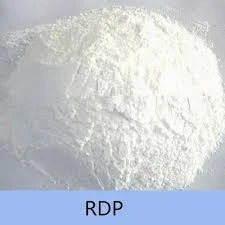
សីហា . 19, 2024 04:25 Back to list
Optimizing Cement Bonding with Innovative Additives for Improved Durability and Strength
The Importance of Cement Bonding Additives in Modern Construction
In the field of construction, the quest for stronger, more durable building materials continues to be a paramount concern. Cement, being a fundamental component of construction, forms the backbone of most structures. However, the inherent properties of cement can sometimes fall short in terms of bonding strength, workability, and durability. This is where cement bonding additives come into play, enhancing the performance and longevity of cement-based materials.
Cement bonding additives are specially formulated substances that are mixed with cement to improve its various properties. These additives serve multiple purposes they enhance adhesion, improve water resistance, increase flexibility, and even reduce the risk of cracking. By incorporating these additives, construction professionals can create a more robust material that can withstand various environmental conditions and mechanical stresses.
One of the primary benefits of using cement bonding additives is their ability to improve adhesion between different substrates. This is crucial in projects where cement is applied over existing surfaces, such as tile, wood, or old concrete. The enhanced bonding capabilities ensure that the new layer adheres properly, reducing the chances of delamination or failure. Additives like polymer-modified resins are particularly effective as they create a stronger bond between the cement and the substrate, making the structure more resilient over time.
Moreover, cement bonding additives can significantly improve the water resistance of cement-based materials. In locations with high humidity or moisture exposure, traditional cement can become weak and susceptible to damage. Additives containing hydrophobic properties can help repel water, keeping the structure intact and preventing issues such as corrosion, mold growth, and efflorescence. This water-resistant characteristic not only prolongs the lifespan of the construction but also reduces maintenance costs.
cement bonding additive

Another crucial aspect of cement bonding additives is their role in enhancing the flexibility of cement mixtures. Conventional cement can be brittle and prone to cracking under stress or temperature fluctuations. By integrating additives that promote flexibility, such as silicone-based compounds, construction materials can better withstand thermal expansion and contraction. This characteristic is particularly beneficial in regions with extreme weather conditions, where the ability of a structure to adapt to temperature changes is vital.
Economically, the use of cement bonding additives can lead to cost savings in the long run. While there may be an initial investment in higher-quality materials, the improved performance and extended lifespan of structures can offset these costs. Reduced maintenance requirements and fewer repairs can result in significant savings for builders and property owners alike.
In addition to their practical benefits, cement bonding additives contribute to sustainable construction practices. By enhancing the durability of cement-based materials, these additives help decrease the frequency of repairs and rebuilds, leading to reduced material waste over time. Furthermore, some modern additives are formulated from recycled materials, aligning with the growing demand for environmentally friendly construction practices.
In conclusion, cement bonding additives play a crucial role in modern construction by enhancing the properties of cement. Their ability to improve adhesion, increase water resistance, provide flexibility, and contribute to sustainability makes them an invaluable asset for construction professionals. As the industry continues to evolve, the adoption of these innovative additives will likely become even more widespread, resulting in stronger, more reliable structures that stand the test of time. The future of construction is indeed bright with the continued integration of advanced materials and technologies.
-
Why HPMC is a Key Additive in Wall Putty Formulations
NewsAug.05,2025
-
Redispersible Powder in Decorative Renders: Function Meets Finish
NewsAug.05,2025
-
Redispersible Powder for Interior Wall Putty: Smooth Results Every Time
NewsAug.05,2025
-
HPMC’s Water Retention Capacity in Dry Mortar Applications
NewsAug.05,2025
-
HPMC Factory Contributions to Liquid Detergents
NewsAug.05,2025
-
How HPMC Factory Products Change Detergent Textures
NewsAug.05,2025







